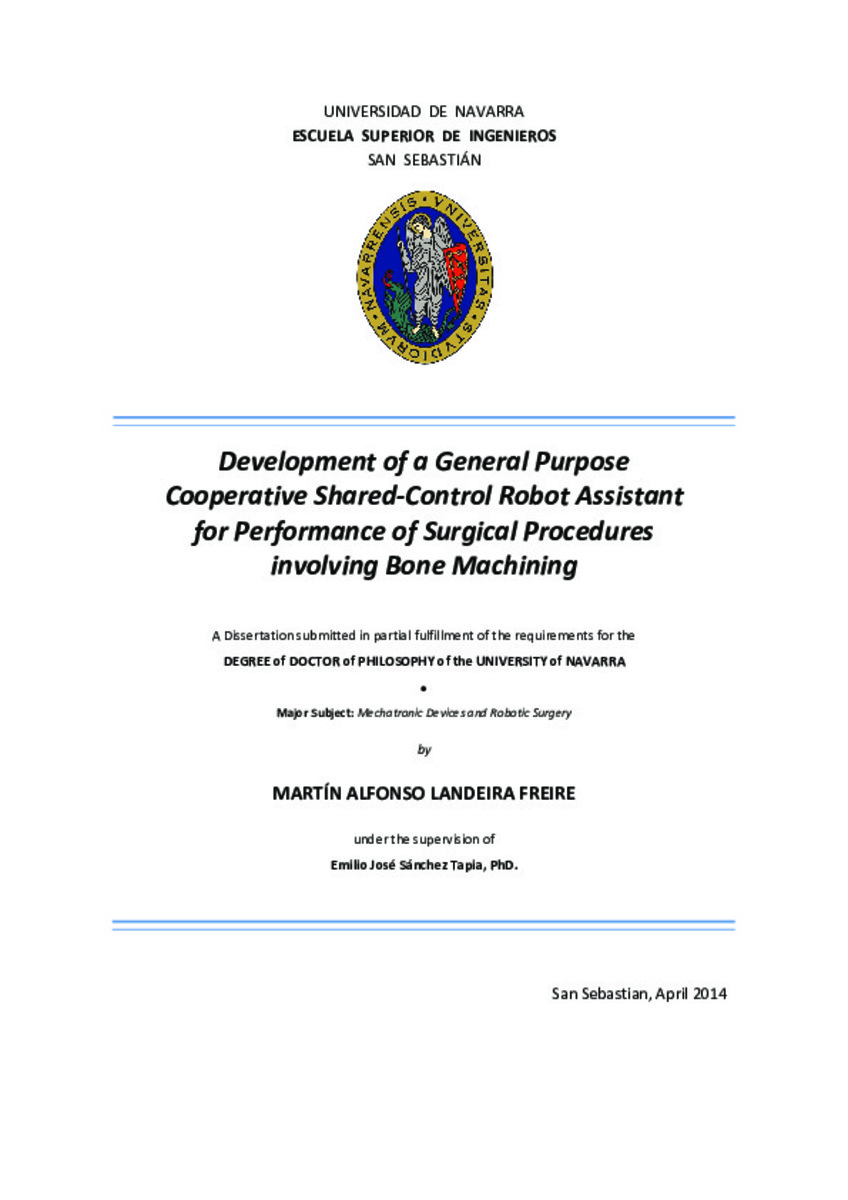Development of a general purpose cooperative shared-control robot assistant for performance of surgical procedures involving bone machining
Palabras clave :
Medical Robotics.
Real-time systems.
Redundant Manipulators
Robot Control and Programming.
Adaptive Cooperative Control
Predictive Models
Fecha de publicación :
2014
Fecha de la defensa:
8-may-2014
Editorial :
Servicio de Publicaciones de la Universidad de Navarra
Cita:
LANDEIRA FREIRE, Martin Alfonso. ""Development of a general purpose cooperative shared-control robot assistant for performance of surgical procedures involving bone machining. Sánchez-Tapia, E.J. Tesis doctoral. Universidad de Navarra, Pamplona, 2014
Aparece en las colecciones:
Estadísticas e impacto
0 citas en

0 citas en

Los ítems de Dadun están protegidos por copyright, con todos los derechos reservados, a menos que se indique lo contrario.







